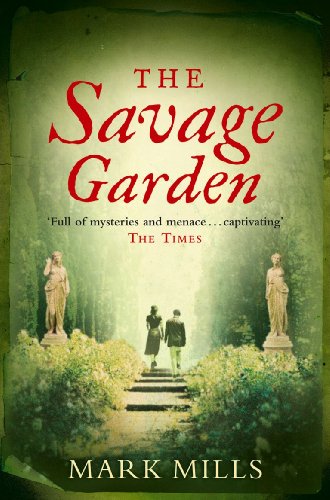The Savage Garden
In 1958, Cambridge art history student, Adam Strickland, goes to Tuscany to work on the Mannerist garden of the Villa Docci near Florence. The garden, apparently created by a grieving husband in memory of his dead wife, turns out to harbour much darker secrets than Adam had anticipated, as does the villa itself. Soon, Adam is drawn into a complex mystery which shifts between the 16th century and the recently-ended Second World War, and into the web of charm woven by the Docci family.
Mark Mills won the Crime Writers’ Association’s John Creasey Memorial Dagger for his first novel, The Whaleboat House (US title Amagansett) in 2004. Whether that was a weak year from crime writing or he is suffering from second novel syndrome I cannot say, but, although I enjoyed reading The Savage Garden, I cannot rate it that highly. Mills distracts from the narrative momentum of his novel with learned digressions on all sorts of matters from classical mythology to the evolution of orang-utans. While these do have some incidental bearing on the plot, Mills goes into far more detail than is necessary, which is frustrating when you’re longing to know what happens next. Possibly as a result, the end feels rushed, almost as though Mills has simply got bored.
The novel is also thin on period atmosphere. It is almost as though the year 1958 was chosen solely to serve the needs of the wartime plot strand, and the author has not bothered to consider the 1950s as an historical decade in its own right. I spotted several glaring anachronisms, including a reference to Velcro fastenings. I was also left with the feeling that the characters lacked the right period sensibility, especially the young, unmarried women whose carefree attitude to sex seemed implausible.
A fun read, meticulously researched and informative about all sorts of things, but not a masterpiece.










